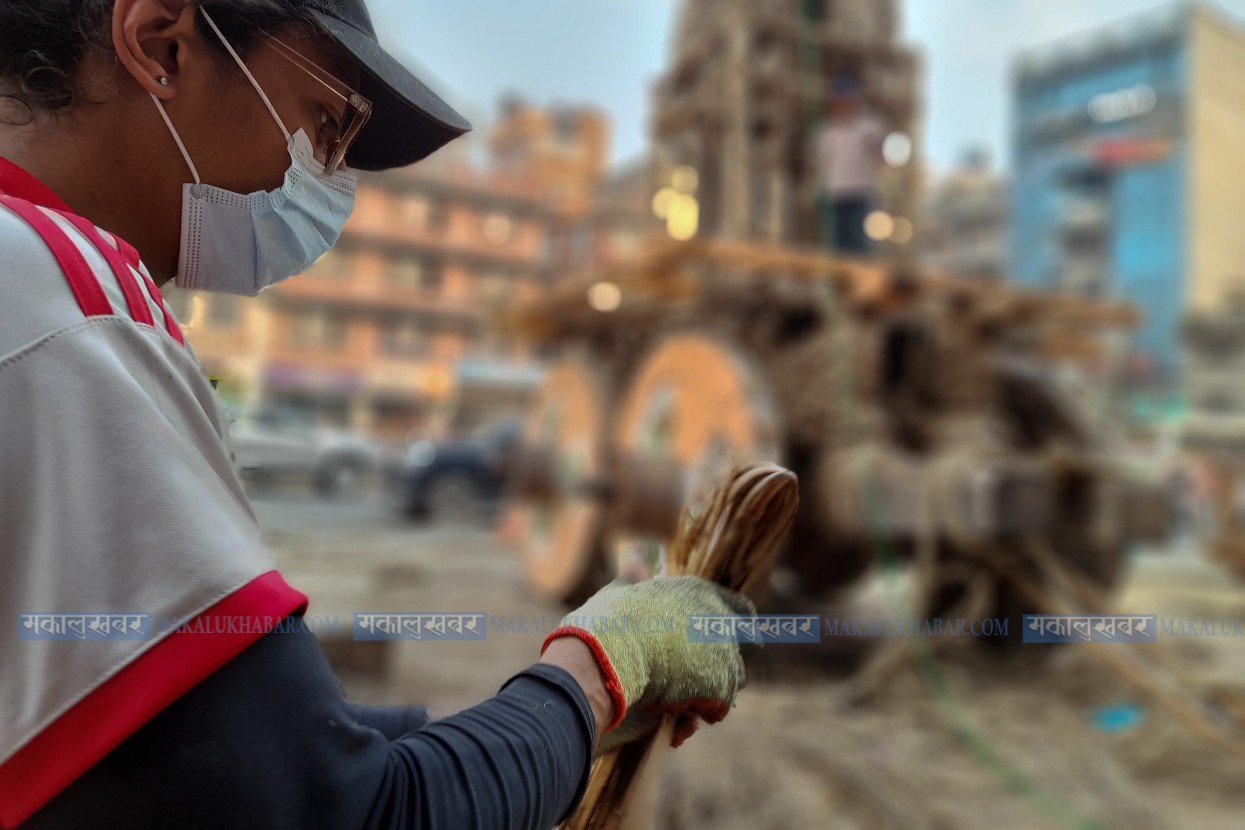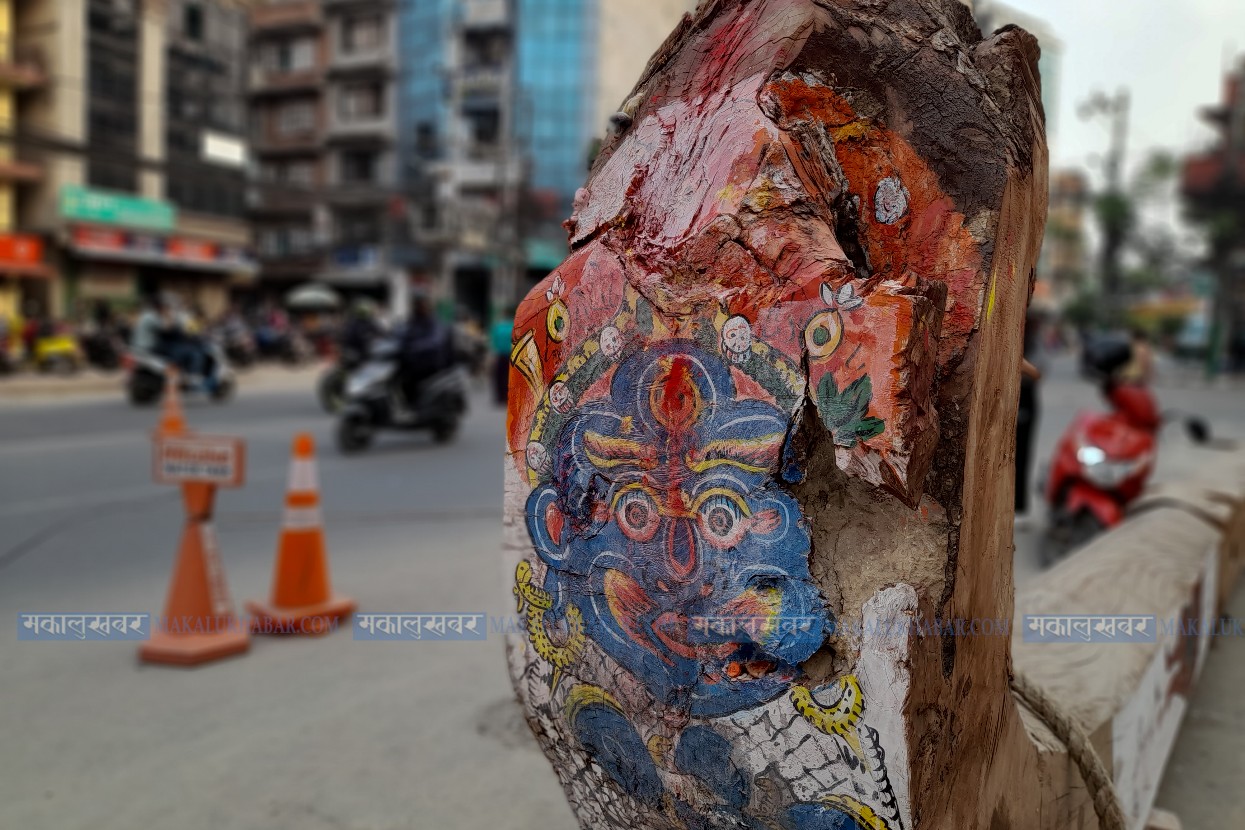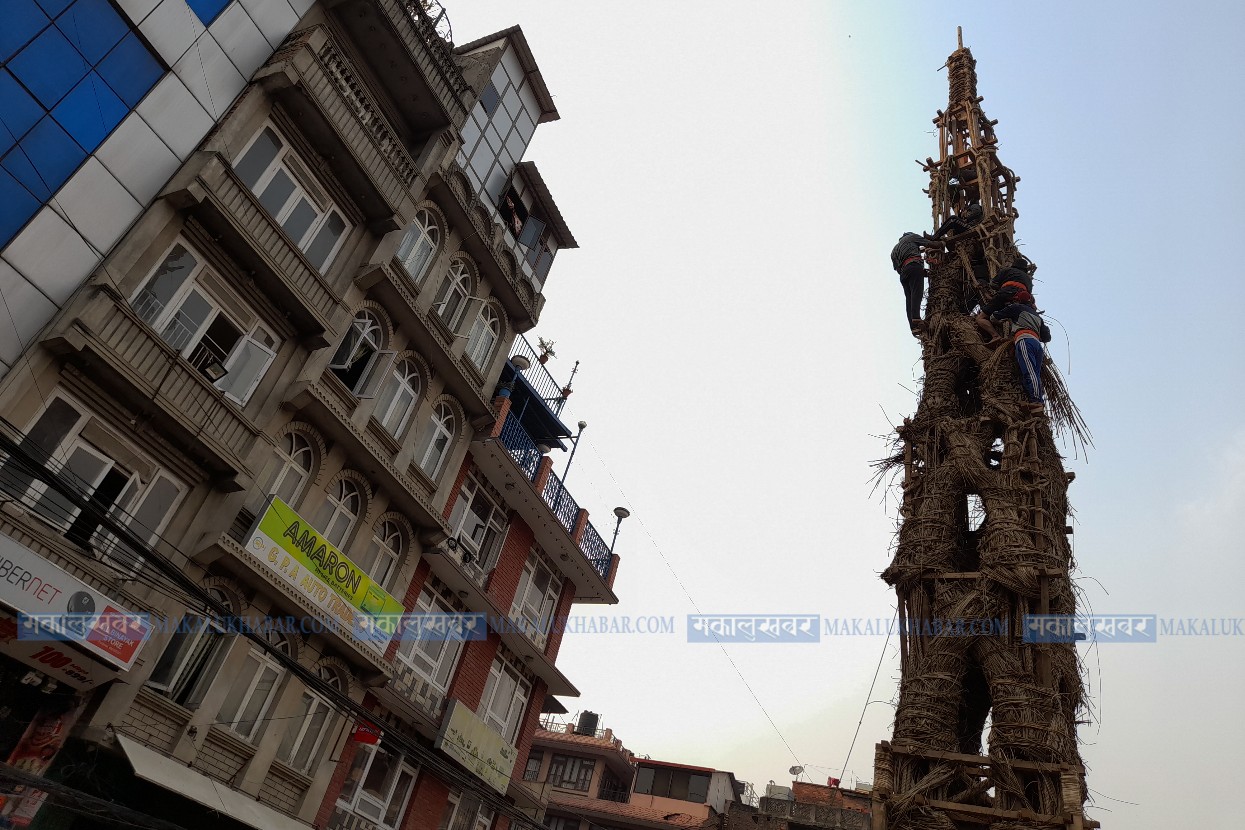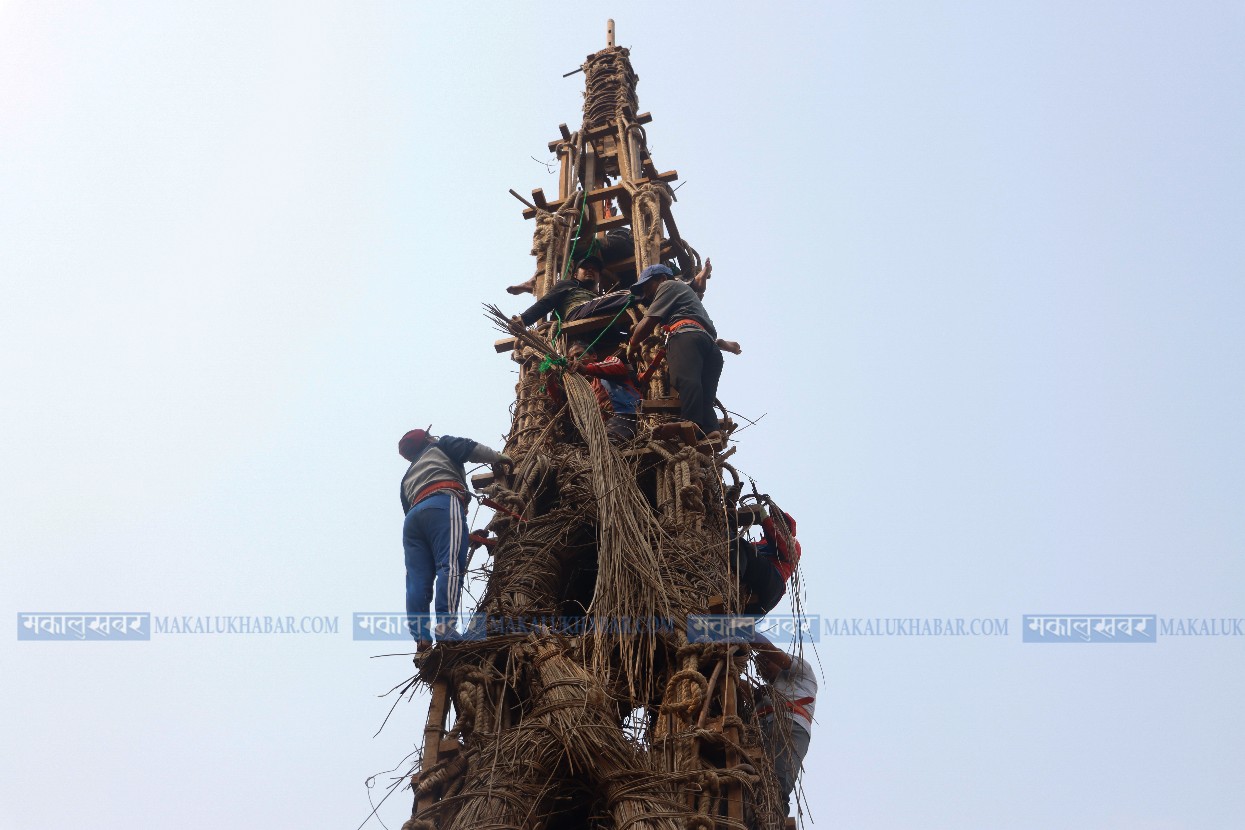In Pictures: Rato Matsyendranath Jatra Preparation
Work on the chariot has been accelerated.

KATHMANDU: APRIL. 29 – Beginning on May 4, a chariot for Rato Matsyendranath’s chariot is being built.
The chariot is being built after Rato Matsyendranath is bathed on Baisakh Krishna Pratipada.
The Guthi Sansthan has stated that the work on the chariot has been accelerated as Matsyendranath must ride it in Baisakh Shukla Pratipada. Chariots are constructed using various types of wood and cane.
A chariot is traditionally made by tying it with a cane rope with a wooden handle.
It is customary to place the idol of Matsyendranath on a khata from the Tasbahal of Patan and ride on a 32-foot-tall chariot built at Pulchowk.
There is a tradition of rath yatra (journey in a chariot accompanied by the public) on the fourth day after the idol of Matsyendranath is mounted on the chariot. The next day on the day of Mother’s Day, the chariot of Rato Matsyendranath is pulled from Pulchowk and taken to different places of Patan.
Legend
According to legend, Matsyendra was born under an unlucky star. As a result, his parents threw the baby into the sea. The baby was swallowed by a fish and lived for many years as a result. The fish swam to the bottom of the ocean where Shiva was imparting the secrets of yoga to his consort, Parvati. Matsyendra began practising yoga sadhana inside the fish’s belly after learning the secrets of yoga. He finally emerged as an enlightened Siddha after twelve years.
This is frequently cited as the origin of his name, ‘Lord of the Fishes’ or ‘He Whose Lord is the Lord of the Fishes.’ Other versions of the legend exist, including one in which Matsyendra was born as a fish and was transformed by Shiva into a Siddha. According to Tibetan versions of the story, Mina, a fisherman-turned-Siddha, is eaten by a fish while working in the Bay of Bengal. Some scholars compare this legend to the Biblical story of Jonah and the Whale.
Another legend says that, when Gorakshanath visited Patan, Nepal, he captured all of the rain-showering serpents of Patan and began to meditate after being disappointed by the locals who refused to grant him any alms on his request. As a result, Patan was subjected to severe drought for an extended period of time.
On the advice of his advisers, the king of Patan invited Gorakshanath’s guru, Matsyendranath, to Patan. When Gorakshanath found out that his teacher was in Patan, he summoned all of the rain-showering serpents and went to see him. Patan received plenty of rain every year after the rain-showering serpents were released. After that, the people of Patan worshipped Matsyendranath as the rain god.
Based on this legend, there is a tradition of making a procession to the idol of Matsyendranath.
Photos:-














-Saroj Banet/Makalu Khabar










